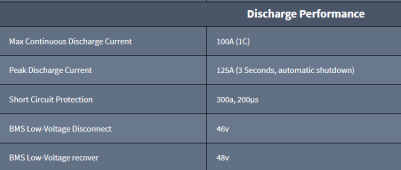Thanks, OZ! I know there are people on here (you, for one) are here with these systems that either use them or are going to. I just forget who those people are, so I can't ask them. But, yeah, the 100ah are the one's I'm about to order. I finally heard back from the guy at Current Connections who told me as long as the charge parameters lined up, it should be ok. But I wanted to hear it from somebody who knew something about the Trace inverters (or older Xantrex) so I don't ruin something right out of the gate. And just before I got on here, I ran across a really good page with a ton of information I was looking for. And it's in layman's language, not techno speak that I don't comprehend.
https://www.solacity.com/how-to-keep-lifepo4-lithium-ion-batteries-happy/
It confirms your advice about not charging to 100%, turn off the float mode, turn off the balance mode and the temp sensors. (I'll have to go back and pull the 4 on mine). So they're disabled by just disconnecting the plugs? Thanks, I was wondering about that.
So, how many are you getting, and did you catch the sale? Two weeks ago when I was deciding, there were close to $1800@. They're $1650 right now. I think I'm getting the 5 stack, though I thought about just getting two to start with. They sound like great batteries. And after that article I just read which talked about the BMS system being the weak link in LiFePO's, the SOK's absolutely make sense.
A few questions- what type/size fittings are their battery posts accepting? I've got the Trace 4/0 cables with ring fittings. Will those work? Also, are your inverters going to be able to use the CANbus/RS485 comm or is that a no-go with these. I still haven't figured out what the rest of the RYconnections in the AC side are for. I know 7 and 8 are for gen controls, and one is for a remote panel. But not the rest of them. Anyway, let me know when you get them! I want to hear how your set up goes. Lee




